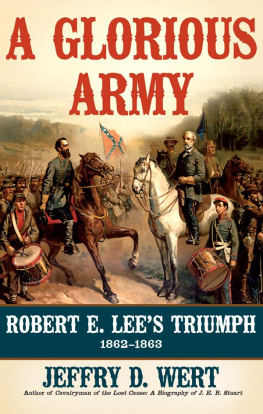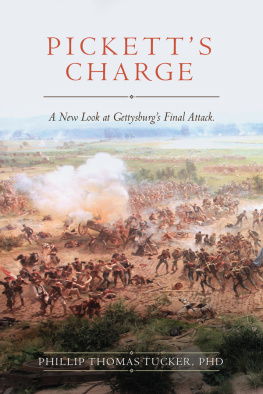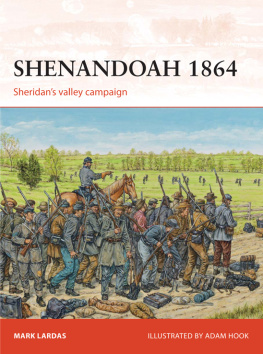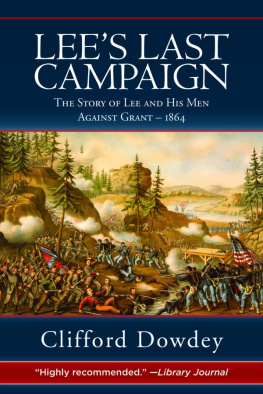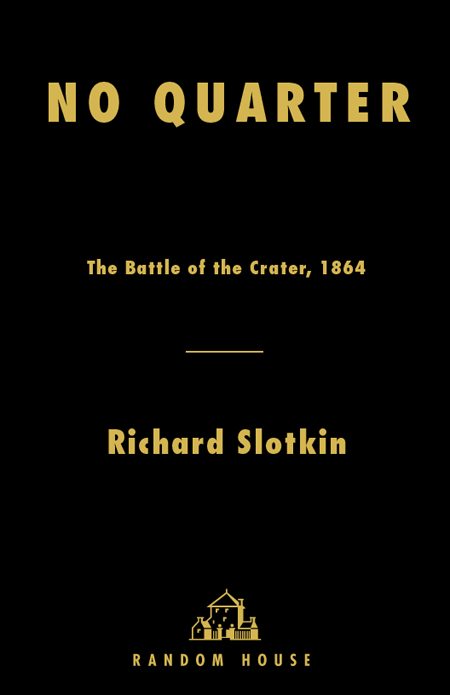If [war] was a perfect, unrestrained, and absolute expression of force then the moment politics called it forth, [war] would replace politics and follow its own laws: just as the explosion of a mine, at the moment it occurs, cannot be guided in any other direction than that given to it by the preparatory arrangements. But it is not so. War is not merely a political act, but also a real political instrument, a continuation of political commerce by other means.

Preface
T he Battle of the Crater, July 30, 1864, has gone into the history books as a stupendous failure. It was not the casualty list that set the battle apart. Losses were moderate by the bloody standards of Grants 1864 overland campaign. What made the failure stupendous was the loss of a spectacular opportunity to capture the vital railroad junction of Petersburg, to drive Lees army away from the Confederate capital of Richmond, and to end the war before Christmas.
The Federal Army of the Potomac had fought its way south at terrible cost, only to be stymied at Petersburg by Confederate forces fighting from behind an impregnable trench line. Then the ingenuity of a regiment of Pennsylvania coal miners in General Burnsides IX Corps created the opportunity for a breakthrough. Directed by their colonel, a mining engineer in civilian life, they dug a tunnel more than five hundred feet long, right up under a Confederate strongpoint, and packed four tons of blasting powder into galleries at its end. It was the longest military mine that had ever been dug, and when the powder was touched off, it would create what was the largest man-made explosion in history. To spearhead the infantry attack Burnside chose his 4th Division, nine regiments of African American soldiersthe largest Black military formation to that point in our history. The division was given special training in the maneuvers required to exploit the breach the mine would create.
The operation was designed to achieve a decisive victory. More than that, it was an operation that seemed to draw upon the unique strengths of the Unionits mastery of industrial technology, the voluntarism and skill of free labor, the moral and physical energy liberated as a result of its embrace of emancipation.
But all of this planning, labor, and high hope ended in embarrassing defeat. It was not just the skill and courage of the Confederate defenders that wrecked the Union assault, but the jealousy, intransigence, incompetence, and even cowardice of Federal generals. Hundreds of their soldiers were trapped in the huge sheer-sided crater left by the mine explosion, helpless to defend themselves. The closing phase of the battle was marked by a combination massacre and race riot, as White troopsboth Union and Confederateturned against the Black soldiers. To make matters worse, this debacle came just as Lincolns reelection campaign was beginning. It intensified a growing crisis of public confidence in Lincolns war policy and strengthened the prospects of the Peace Democrats, who opposed both the war effort and the emancipation of the slaves.
The failure was investigated by a military court of inquiry in August 1864, and later by Congresss Joint Committee on the Conduct of the War (JCCW). Historians have generally accepted the finding of the court, that Burnside and his division commanders were responsible for the fiasco. But the court was primarily interested in limiting the embarassment suffered by the army and its senior commanders. Instead of using the investigation to expose and correct the systemic flaws that crippled the Army of the Potomac, the court ignored and thereby perpetuated them. The court also ignored the unique features of the battle: the racially motivated killing of wounded men, the murder of POWs, and the White-on-Black violence within the Federal ranks.
The Battle of the Crater is worth a closer look. Its role in the campaign against Richmond was more significant than contemporaries realized, or most historians have allowed. The assault of July 30 was part of a larger, and largely successful, maneuver plan developed by General Grant, which modeled the tactics by which he would eventually break Lees defenses. Few historians have taken a critical look at Lees handling of the battle, yet there is good reason to think that Grant outgeneraled Lee in the lead-up to the Crater, and that Lee was lucky to have avoided disaster.
But the real interest of the Battle of the Crater lies in what it reveals about an American society at war with itself. The battle was fought at a moment of equilibrium in the struggle between two systems of thought and social organizationslavery on one side, free labor on the other. However, within each of the rival systems, transforming forces were at work. The South was faced with a radical choice between the preservation of slavery and national survival. Lincolns reelection campaign presented supporters of the Union with stark choices about how the war should be fought and what kind of society ought to come out of it. Presidential politics would powerfully influence the decisions that produced the battle.
Above all, the Battle of the Crater is worth a closer look because the flash of its explosion illuminates the centrality of race in the tangle of social and political conflicts that shaped American life as the Civil War approached its climax. Because of the racial element, participants would remember this as the most intense and vicious combat of the war, and even the passage of time did not allay the bitterness it engendered. The animosities exposed on this battlefield were the same passions that would wreck postwar attempts to reconstruct the nation as a multiracial democracy.
My purpose in writing this book is to give the reader a clear and accurate account of the strategic setting and the battle action as it developed hour by hour, and to show how the culture and politics of that place and time shaped the way the soldiers fought and the meanings they saw in their experience of war.

Contents
PART ONE
PART TWO
PART THREE
PART FOUR
THE BATTLE OF THE CRATER
JULY 30, 1864
14. T HEY F OUGHT L IKE B ULLDOGS, AND D IED L IKE S OLDIERS
Last Stand in the Crater 8:45 A.M.-2:30P.M .
PART FIVE
17.

List of Maps


